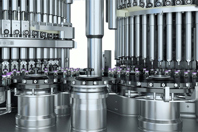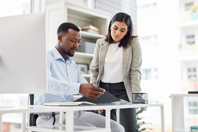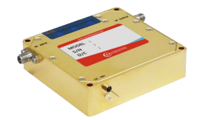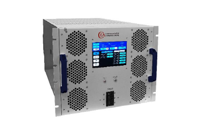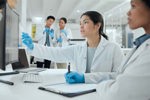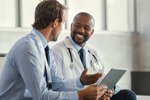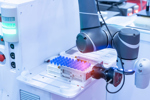RFICs
PRODUCTS
-
With our Switch 350, you benefit from the advantages of two machine concepts: We have combined the modularity, handling options, and technologies of our well-proven standard platforms with the flexibility of our small batch inspection machine to run syringes and vials on one and the same machine – with nesting system for syringes and vials alike.
-
Gain expert guidance and connect with a global network of qualified QPPVs and LPPVs, who will ensure compliance with pharmacovigilance regulations and tailor their approach to your product launch strategy.
-
Anritsu's Capsule Pharmaceutical Checkweigher is the best weighing solution for a variety of capsules, where slight variances in active pharmaceutical ingredients can have a large impact on efficacy. It's equipped with Anritsu's force balance load cell that provides weight accuracy of +/- 0.5 mg. Each capsule is individually weighed, monitored, and tracked. The handling system is designed to minimize static electricity and vibration generated from the drop of the capsule from the magazine to the weigh cell. The rejection mechanism includes three gates and a confirmation sensor to make sure that capsules with incorrect weight are removed from the production flow. Our capsule checkweighers are available in three models with 10, 20, or 30 lanes, and a maximum inspection capacity of 230,000 capsules/h.
-
The MPA3013 is a high-performance medium power amplifier designed for applications requiring a wide operating frequency range and significant output power in a compact form factor.
-
The AMP2052P-4KW is a robust solid-state amplifier designed for demanding EMI/RFI, lab, and HIRF/pulse applications.
WHITE PAPERS AND CASE STUDIES
-
Seamless Onshoring From China-Based CDMO
Successfully mitigate geopolitical risk and maintain supply continuity. Learn how a large-scale manufacturing process was rapidly requalified in eight months to secure a clinical-stage biologic program.
-
The Value Of Peptones For Enhancing Biopharmaceutical Productivity
Peptones, versatile media additives derived from various sources, offer numerous benefits for biopharmaceutical production.
-
Improving Patient Health And Safety: Medical Affairs
A medical affairs department needed leaders with scientific and project management expertise. With no time for training or risk tolerance, a consultant was hired to align activities with development and launch plans.
-
A Paperless Lab Simplifies, Accelerates Full Sample Lifecycle Data Management
Implementing IDBS’ ELN helped Crown Bioscience realize electronic experimental records, optimizing our business processes and helping them to be more standardized.
-
Scalable FSP Model For Managing IVD Clinical Trials In A Niche Market
Here, we illustrate the advantages of our FSP services, including enhanced scalability, risk mitigation, cost efficiency, and timely project completion.
-
Successful Cell-Based ADA Collaboration In mRNA Gene Replacement Therapy
A biotech firm developed a rapid, sensitive, cell-based ADA assay through collaborative innovation, reducing variability and turnaround time while improving performance for mRNA gene therapy.
-
Lean Six Sigma Methodology Drives Cost Savings: 2 Success Stories
Unlock significant lab efficiency and financial gains. See how focused optimization of workflows and asset management led to substantial cost savings and reclaimed six-figure value in consumables.
-
Cooling Tower Water Disinfection At Bielefeld, Germany
The City of Bielefeld, Germany provides municipal utilities including electricity, natural gas, district heating, and water needs for a population of approximately 330,000. The municipality operates three gas-fired boilers with tapping turbines to feed into the district heating system that has a thermal peak load of 300 MW.
-
Enhancing Preclinical Cell Therapy Development
Automation in cell therapy development boosts reproducibility, reduces error, and enhances yield. Learn how it’s reshaping preclinical workflows and accelerating clinical trial readiness.
-
Large-Scale, 24/7 Mobile Quality Monitoring And Service Level Verification
Learn how CERN, the European Organization for Nuclear Research, created a reliable, cost-efficient, and fully compliant monitoring system for SLA verification with Android Probe and MNT solutions.
-
Enhancing Investigator Training And Communication During COVID-19
Centralizing all trial-related information, enabling seamless interaction and global team coordination through Scout Academy.
-
Breaking Free From Process Paralysis In Clinical Trials
Explore the implementation of CRIO’s eSource solution by a leading pharmaceutical company to overcome process paralysis in clinical research.
NEWS
-
New Technology Tracks Dairy Cows For Improved Health And Productivity1/30/2025
As dairy farmers dwindle every year, the demand for high-quality milk remains steadfast, driving a surge in dairy farming.
-
Smarter Dentistry Starts Here: Muskan.AI Enhances Diagnostics, Imaging & Patient Care5/19/2025
Muskan.AI, a pioneer in the application of artificial intelligence to dentistry, has reached several key milestones in its mission to transform dental care through intelligent, accessible, and clinician-focused technology.
-
Meatable And TruMeat Collaborate To Accelerate Cost-Effective Cultivated Meat Production4/30/2025
Meatable, the leader in cultivated meat technology, and TruMeat, specializing in the contract manufacturing of cultivated meat at commercial scale, have formed a strategic collaboration to advance the global commercialization of cultivated meat.
-
From Everyday To Extreme, Toolant Launches Brand New Line Of Hand Tools8/15/2025
Today, toolant, a tool and accessories brand built around real-world needs, announced the launch of its brand new hand tools collection designed for automotive enthusiasts and professional car detailers alike.
-
New Land Grant Research Detects Dicamba Damage From The Sky7/9/2025
Drones can now detect subtle soybean canopy damage from dicamba at one ten-thousandth of the herbicide’s label rate — simulating vapor drift — eight days after application.
ABOUT
About Nutrient Removal
Nutrient removal from wastewater consists of treating wastewater to remove nitrogen and phosphorus before it reenters natural waterways. High levels of nitrogen and phosphorus in wastewater cause eutrophication, a process where excess nutrients stimulate excessive plant growth such as algal blooms and cyanobacteria. The decomposition of the algae by bacteria uses up the oxygen in the water causing other organisms to die. This creates more organic matter for the bacteria to decompose. In addition, some algal blooms can produce toxins that contaminate drinking water supplies.
As authorized by the Clean Water Act, the National Pollutant Discharge Elimination System (NPDES) permit program regulates point sources, such as municipal wastewater treatment plants, that discharge pollutants as effluent into the waters of the United States. In recent years, many of the States’ environmental bodies have lowered nutrient limits to arrest eutrophication. Maryland’s effort to protect the Chesapeake Bay and its tidal tributaries is perhaps the most notable example of nutrient removal in the US. Nutrient removal continues to be a growing area of focus for wastewater treatment throughout the world.
The removal of nitrogen and phosphorus require different nutrient removal processes. To remove nitrogen, the nitrogen is oxidized from ammonia to become nitrate through a process called nitrification. This process is then followed by denitrification where the nitrate is reduced to nitrogen gas which is released to the atmosphere and removed from the wastewater.
Nitrification is a two-step aerobic process which typically takes place in aeration tanks. Denitrification requires anoxic conditions to encourage the appropriate biological conditions to form. The activated sludge process is often used to reduce nitrate to nitrogen gas in anoxic or denitrification tanks.
Phosphorus can be removed biologically using polyphosphate accumulating organisms (PAOs) which accumulate large quantities of phosphorus within their cells and separate it from treated water. Phosphorus removal can also be achieved by chemical removal. Once removed as sludge, phosphorus may be stored in a land fill. However, many municipalities and treatment facilities are looking to resell the biosolids for use in fertilizer.

